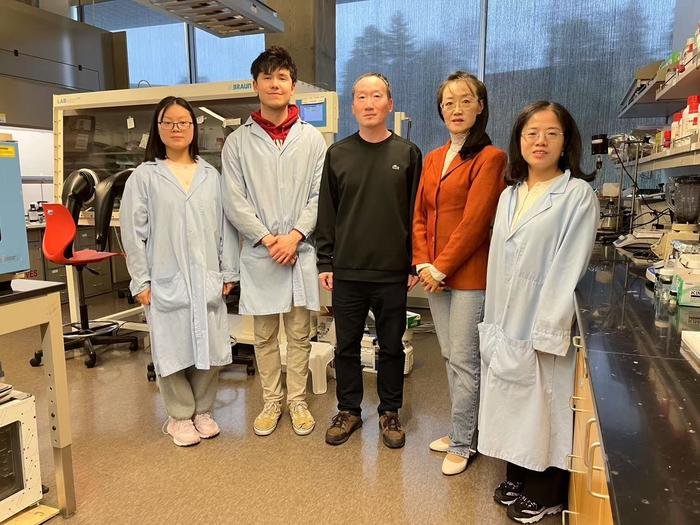A team of researchers at Washington State University has found a surprising way to tackle one of the biggest hurdles in next-generation battery technology — with protein derived from corn.
Their breakthrough, published in the Journal of Power Sources, demonstrated that when a protective barrier made of corn protein is combined with a commonly used plastic, lithium-sulfur batteries can maintain their charge for more than 500 cycles — a significant improvement that could accelerate the adoption of these environmentally friendly power sources.
“This work demonstrated a simple and efficient approach to preparing a functional separator for enhancing the battery’s performance,” said Katie Zhong, professor in the School of Mechanical and Materials Engineering and a corresponding author on the paper. “The results are excellent.”
Lithium-sulfur batteries have long been considered a promising alternative to the lithium-ion batteries found in today’s electric vehicles and electronic devices. They theoretically contain more energy while weighing less, meaning electric vehicles could travel further on a single charge with smaller, lighter batteries.
Even more impressive is their environmental profile. Unlike lithium-ion batteries, which use cathodes made from metal oxides containing toxic heavy metals like cobalt or nickel, lithium-sulfur batteries use abundant, inexpensive, and non-toxic sulfur.
Despite these advantages, the technology has faced commercial roadblocks due to two major problems. The first is called the “shuttle effect,” where sulfur leaks into the liquid part of the battery and migrates to the lithium side, causing rapid battery failure. The second issue involves the growth of spiky lithium metal formations called dendrites, which can cause dangerous short circuits.
The WSU team’s innovation addresses both problems using a natural material that might seem more at home in your pantry than in your battery.
“Corn protein would make for a good battery material because it’s abundant, natural, and sustainable,” explained Jin Liu, professor in the School of Mechanical and Materials Engineering and a corresponding author on the paper.
The researchers used a protein called zein, which is found in corn, as a cover for the separator in the middle of the battery. The amino acids in the protein reacted with the battery materials to improve the movement of lithium ions while inhibiting the shuttle effect.
A key innovation in their approach was adding a small amount of flexible plastic to the protein to prevent it from folding on itself, which would reduce its effectiveness.
“The first thing we need to think about is how to open the protein, so we can use those interactions and manipulate the protein,” Liu said.
In testing, batteries equipped with the corn protein-modified separator demonstrated significantly improved performance. After 500 charging cycles, these batteries maintained about 62% of their capacity (around 450 mAh g−1), while batteries with conventional separators retained only 16% of their capacity (about 150 mAh g−1).
The research has broad implications for renewable energy storage, electric vehicles, and consumer electronics. Large-scale energy storage systems, which are crucial for integrating intermittent renewable energy sources like wind and solar into the power grid, could particularly benefit from this technology’s combination of high performance and environmental friendliness.
The team is now conducting further studies to understand exactly how the process works at the molecular level, which amino acid interactions are most beneficial, and how the protein structure might be optimized.
“A protein is a very complicated structure,” Zhong noted. “We need to do further simulation studies to identify which amino acids in the protein structure can work best for solving the critical shuttle effect and dendrite problems.”
The researchers hope to collaborate with industry partners to scale up the process and test larger experimental batteries. Their work, which was funded by the U.S. Department of Agriculture, represents an innovative intersection of food science and energy technology that could help advance sustainable power systems without relying on scarce or toxic materials.
If our reporting has informed or inspired you, please consider making a donation. Every contribution, no matter the size, empowers us to continue delivering accurate, engaging, and trustworthy science and medical news. Independent journalism requires time, effort, and resources—your support ensures we can keep uncovering the stories that matter most to you.
Join us in making knowledge accessible and impactful. Thank you for standing with us!

